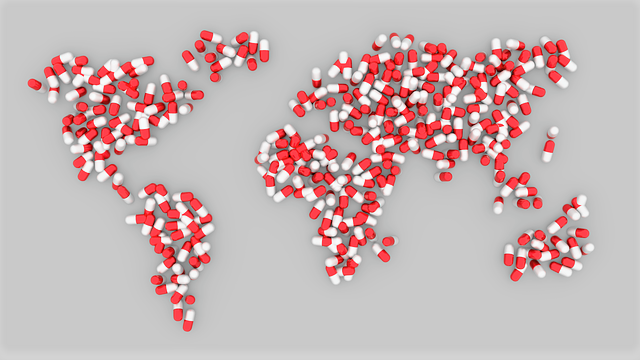Search Term
Project
 |
Summary | With the advent of an aging society, healthcare (including nursing care and welfare) is increasingly important but the cost of providing healthcare is increasing. As a result, there is a demand for high-quality and efficient healthcare. In that regard, it is the healthcare institutions that actually deliver the healthcare to the patients and users. Therefore, management of healthcare institutions is extremely important in realizing cost-effective healthcare. By our research in healthcare institution management, focusing on the medical corporations at the center of Japan’s healthcare institutions, we will search for solutions to the problems of today. |
|---|---|---|
| HIAS team members | Ko Arai, Ryo Watanabe, Hiromasa Sakaguchi, Kentaro Koi, Madoka Ishida, Keiichi Tamura |

|
Summary | The purpose of this research is to obtain policy implications for improving the health and social welfare of middle-aged and elderly people. In the analysis, we not only take into account various individual-level socio-economic factors such as income, educational background, and employment status, but also regional-level socio-economic factors such as disparity and poverty in the area of residence, level of social participation activities, and employment status. We will focus on the social determinants of health among middle-aged and elderly people and analyze them under a dynamic framework, as well as calculate the impact of pension and employment system reforms on health disparities as a policy simulation. Furthermore, we will attempt to compare Japan and Japan by using individual data from various large-scale social surveys conducted in China. |
|---|---|---|
| KAKENHI, Scientific Research (C) 23K01419 | HIAS team members | Takashi Oshio |
 |
Summary | The health status of workers not only affects their own happiness, but also has a major impact on companies and society as a whole through medical costs and labor productivity. In this study, we will use individual data on health checkups, stress checks, and labor affairs provided by a company to analyze health factors related to physical and mental health that affect work conditions. This research not only improves the health status of workers, but also has great social significance, as it will lead to reduced medical costs and improved productivity. |
|---|---|---|
| HIAS team members | Kazumitsu Nawata |

|
Summary | In response to the declining birthrate and deterioration of the environment surrounding children that has progressed due to the COVID-19 pandemic, this project aims to (1) preform a full-fledged evaluation of measures that have the potential to stop the declining birthrate, and (2) analyze what kind of children are affected by the prolonged COVID-19 pandemic. Therefore, regarding (1), this project will examine the effects of subsidies for infertility treatment and the effects of lump-sum childbirth grants and for (2), an analysis of various individual data will be conducted. |
|---|---|---|
| HIAS team members | Reo Takaku |

|
Summary | Housing is a largely overlooked social determinant of health, and its impact on long-term care is even less understood. This study is the first to investigate the relationship between housing and long-term care in Japan, addressing two key questions: To what extent, and in what ways, are housing deficits associated with long-term care needs and utilisation among older Japanese adults? And if these deficits were addressed, how much could be saved in public long-term care insurance expenditures? Using nationally representative longitudinal data, this study estimates potential cost savings and assesses the policy implications. The findings will contribute to emerging international discussions and provide valuable insights for integrating housing considerations into long-term care and public health strategies, promoting cross-sectoral collaboration and guiding more effective resource allocation. Project [2025-04-01-2028-3-31] |
|---|---|---|
| KAKENHI Early-Career Scientists 25K16662 | HIAS team members | Ruru Ping |
 |
Summary | It is now well known that infection with COVID-19 has long-term impact on health, and that it may increase death and illness from a wide range of causes. This project will use data from the Ministry of Health and the Japan Statistics Bureau to assess the impact of the COVID-19 pandemic on population health in Japan. It will use sophisticated intervention analysis techniques developed by the principal investigator for assessing the impact of sudden events on population health, to comprehensively assess the effect of the COVID-19 pandemic on the health of the Japanese people. |
|---|---|---|
| KAKENHI Scientific Research (B) 24K02676) | HIAS team members | Phuong The Nguyen (Co-I) |
 |
Summary | It is now well known that infection with COVID-19 has long-term impact on health, and that it may increase death and illness from a wide range of causes. This project will use data from the Ministry of Health and the Japan Statistics Bureau to assess the impact of the COVID-19 pandemic on population health in Japan. It will use sophisticated intervention analysis techniques developed by the principal investigator for assessing the impact of sudden events on population health, to comprehensively assess the effect of the COVID-19 pandemic on the health of the Japanese people. |
|---|---|---|
| Daiwa Securities Foundation | HIAS team members | Phuong The Nguyen (PI) |
 |
Summary | Colorectal cancer (CRC) incidence is increasing among adults under 40 years old in Japan, highlighting gaps in current screening due to inadequate understanding of age-specific risk factors. In this study, we use a novel data linkage framework that integrates statistical surveys, cancer registries, and environmental data to identify major CRC risk factors in young adults. Advanced statistical and machine learning models are used to analyze dietary, lifestyle, and environmental factors. Obtained findings can guide targeted prevention, enhanced screening guidelines, and public health policies to address the increasing incidence of CRC among young adults in Japan. |
|---|---|---|
| Hirose Foundation | HIAS team members | Phuong The Nguyen (PI) |
 |
Summary | Lung cancer in never smokers (LCINS) is an emerging public health challenge in Japan and globally. Current prevention efforts face significant knowledge gaps, particularly regarding gender- and histology-specific risk factors, partly due to fragmented data sources. This project addresses these gaps by developing an innovative data integration approach, employing advanced analytical techniques to explore LCINS risk factors comprehensively. The results will provide critical insights to support future strategies for lung cancer prevention, screening, and policy improvements in Japan. |
|---|---|---|
| KAKENHI Early-Career Scientists 25K20503 | HIAS team members | Phuong The Nguyen (PI) |

|
Summary | Universal Health Coverage (UHC), that is, universal access to needed quality health services without the risk of financial catastrophe or impoverishment associated with obtaining care, is a key policy item on the agenda for global health as described in Goal 3 of the Sustainable Development Goals. This study aims to examine how the concept of UHC has evolved and to identify new elements in the global health community by reviewing policy documentation. In addition, amidst the growing international debate on responses to health crises following the COVID-19 pandemic, using literature review and stakeholder experiences, the study explores a range of frameworks to better understand the links between pandemic preparedness and UHC, particularly in low- and middle-income countries. Furthermore, effective and quality services have been identified as a cornerstone of UHC. This study reviews evidence on interventions and policy tools that aim to improve service quality at three levels of the health system, and presents useful policy recommendations for low- and middle-income countries. |
|---|---|---|
| Health Labour Sciences Research 24BA1002 | HIAS team members | Ayako Honda, Ruru Ping |

|
Summary | Early detection and treatment of STI and BV can lower the risk of HIV in women and reduce pregnancy complications, both of which continue to be major public health issues, particularly in low- and middle-income countries (LMIC). However, routine testing for these common conditions is not offered in LMIC, often due to the high cost of testing. A low-cost, lateral flow device, the Genital InFlammation Test (GIFT), has been developed to test for STI and BV. The GIFT device can be used at the point of care (POC). The GIFT-Africa research consortium will undertake a diagnostic trial to assess the performance of the GIFT device and undertake an integration study to look at how best to incorporate the GIFT device into routine care in a feasible, acceptable, and cost-effective way. |
|---|---|---|
| KAKENHI, Fund for the Promotion of Joint International Research 22KK0143 | HIAS team members | Ayako Honda |

|
Summary | This study aims to evaluate the effectiveness of graphic health warnings (GHWs) and pharmacist-led lifestyle counseling on tobacco cessation and associated health outcomes in Bangladesh and Pakistan. Using a randomized controlled trial (RCT) design involving more than 10,000 smokers, the research will measure the interventions’ impacts on smoking cessation rates, blood pressure control, diabetes management, and quality of life. Findings from this study will provide evidence for low-cost, scalable strategies to strengthen tobacco control and prevent noncommunicable diseases (NCDs) in resource-limited settings. Project [2025-04-01 – 2028-03-31] |
|---|---|---|
| KAKENHI Scientific Research (B) 25k0848 | HIAS team members | Miznaur Rahman, Ryota Nakamura, Shamima Akter, Motohiro Sato |

|
Summary | This study evaluates the effectiveness and cost-efficiency of pharmacist-led interventions to improve hypertension control and medication adherence among 3600 hypertensive adults in Bangladesh, and Pakistan through a cluster randomized controlled trial (cRCT). Forty community pharmacies per country will be randomly assigned to either intervention or control groups. Pharmacists in the intervention group will deliver educational training, lifestyle counseling, phone calls, text messages, and coordinated care. Primary outcomes include blood pressure reduction, while secondary outcomes encompass medication adherence, hospitalizations, lifestyle changes (diet, smoking), improved health knowledge, and cost-effectiveness measured by incremental cost per quality-adjusted life year gained. This pharmacist-driven health promotion model has the potential to significantly reduce morbidity, mortality, and healthcare costs associated with hypertension, enhance pharmacist capacity, and strengthen community-level patient-provider relationships. Project [2022-04-01 – 2025-03-31] |
|---|---|---|
| KAKENHI ScientificResearch (B) 23K24566 | HIAS team members | Miznaur Rahman, Ryota Nakamura, Motohiro Sato |

|
Summary | 公Efficient resource allocation in public healthcare is an important policy issue worldwide. Cost-effectiveness evaluation is an effective means of achieving this, and each country has introduced a budget allocation system that utilizes cost-effectiveness evaluation for drugs, medical equipment, the allocation of medical personnel, etc. The value of cost-effectiveness evaluation depends on whether standards (thresholds) for judging evaluation results are appropriately set. The thresholds currently in use in almost all countries have little scientific basis. In this study, we quantitatively derive the cost-effectiveness threshold in Japan, Bhutan, Singapore, and Thailand from administrative data, and estimate the effect on medical resource allocation when changing the threshold. In order to maximize the policy impact of research results, research will be carried out in collaboration with relevant national government agencies. |
|---|---|---|
| HIAS team members | Ryota Nakamura | |
| Website | https://thesapphire.health/ |

|
Summary | Achieving universal health coverage (UHC), i.e. equitable access to health services for all, is one of the main Sustainable Development Goals adopted by the United Nations General Assembly in 2015. In sub-Saharan Africa (SSA), however, many households are still confronted with a high risk of incurring financial hardship when seeking care. To address this issue, many governments have recently committed to increasing health financial protection in their population with support from international partners, including Japan. The objective of the proposed research is to inform the design of policies aimed at increasing financial protection in eight West African countries where data is currently outdated or lacking (Benin, Burkina Faso, Côte d’Ivoire, Guinea Bissau, Mali, Niger, Senegal, and Togo). In addition to providing up-to-date estimates of the incidence of catastrophic health expenditure and health insurance rates at a regional, national, and subnational level, the project will provide insights into the potential impacts of reforming the current public health insurance systems on the economic welfare of target populations. Such evidence is critical at a time where many governments in SSA have committed to reducing inequities in access to care to achieve UHC. |
|---|---|---|
| HIAS team members | Thomas Rouyard, Ryota Nakamura |

|
Summary | Evidence suggests that financial incentives can promote specific health behaviors, particularly “one-off” preventive actions such as vaccination or disease screening. While there is limited evidence from low- and middle-income countries, recent studies have shown promising results. In 2022, in collaboration with our colleagues from the University of Oxford and from the University of Ghana, we conducted a field experiment in rural Ghana to assess the impact of cash incentives on COVID-19 vaccine uptake. The results demonstrated the effectiveness of modest cash incentives and, importantly, the absence of negative spillover effects on neighboring individuals who did not receive incentives. However, an unanswered question pertains to whether financial incentives can yield negative within-subject spillover effects. It remains unclear whether individuals who receive incentives for a specific health behavior, such as taking the COVID-19 vaccine, are influenced in subsequent decisions to engage in similar preventive health behaviors without the need for extra incentives. To address this gap in the existing literature, we will conduct a new experiment to evaluate compliance with tuberculosis testing among participants who did and did not receive cash incentives in the COVID-19 trial. |
|---|---|---|
| HIAS team members | Thomas Rouyard, Ryota Nakamura | |
| Website | https://oxford-candour.com/about-us |

|
Summary | The growing burden of type 2 diabetes mellitus (T2DM) and the rising cost of healthcare worldwide make it imperative to identify interventions that can promote sustained self-management behaviour in T2DM populations while minimising costs for healthcare systems. The present research aims to evaluate the effects of a novel behaviour change intervention (FEEDBACK) designed to be easily implemented and scaled across a wide range of primary care settings. A cluster randomised controlled trial (RCT) will be conducted to evaluate the effects of a personalised, multi-component intervention intended to be delivered by general practitioners during a routine diabetes consultation. This intervention consists of five steps aimed at enhancing doctor-patient partnership to motivate sustained self-management: (1) communication of cardiovascular risks using a ‘heart age’ tool, (2) goal setting, (3) action planning, (4) behavioural contracting, and (5) feedback on behaviour. We aim to recruit 264 adults with T2DM and suboptimal glycaemic control from 20 primary care practices in Japan that will be randomly assigned to either the intervention or control group. The primary outcome measure will be the change in HbA1c levels at 6-month follow-up. |
|---|---|---|
| HIAS team members | Thomas Rouyard, Masako Ii, Ryota Nakamura, Michiko Moriyama |

|
Summary | Unhealthy diets, characterized by high consumption of processed foods, sugary beverages, and saturated fats, contribute to obesity and non-communicable diseases (NCDs). Despite the implementation of public policies aimed at improving dietary habits in many countries, there has been limited research examining their impact on health outcomes. The present study aimed to achieve three objectives: 1) conduct a systematic review of all existing evidence concerning the effects of diet policies on health outcomes at the population level; 2) perform pairwise meta-analyses to determine the pooled effect of each policy; and 3) a socioeconomic inequity assessment of the impacts of diet policy implementation. |
|---|---|---|
| HIAS team members | Shamima Akter, Thomas Rouyard, Md. Mizanur Rahman, Ryota Nakamura |
 |
Summary | This project provides comprehensive monitoring and reporting on progress toward UHC and inequalities in African countries to support achieving Health for All. It produces a health atlas that helps policymakers identify priorities and reallocate resources properly in future national health programs. |
|---|---|---|
| KAKENHI JSPS Fellows 22KJ2761 | HIAS team members | Phuong The Nguyen (PI) |
 |
Summary | This project provides comprehensive monitoring and reporting on progress toward UHC and inequalities in African countries to support achieving Health for All. It produces a health atlas that helps policymakers identify priorities and reallocate resources properly in future national health programs. |
|---|---|---|
| Asahi Glass Foundation | HIAS team members | Phuong The Nguyen (PI) |
 |
Summary | This project provides comprehensive monitoring and reporting on progress toward UHC and inequalities in African countries to support achieving Health for All. It produces a health atlas that helps policymakers identify priorities and reallocate resources properly in future national health programs. |
|---|---|---|
| KAKENHI Scientific research (A) 23H00049 | HIAS team members | Motohiro Sato、Ryota Nakamura、Rahman Mizanur、Rouyard Thomas、Ayako Honda、Phuong The Nguyen |

|
Summary | Technology-based interventions (TBIs) are widely used for improving routine vaccination coverage and timeliness among children worldwide. A pairwise meta-analysis and network meta-analysis will be performed to estimate the direct and indirect effects of interventions for each outcome and their cost-effectiveness. |
|---|---|---|
| HIAS team members | Rashedul Islam |

|
Summary | In Japan and elsewhere, a standard approach to distributing COVID-19 vaccines is through a multi-stage rollout targeting different mixes of age and risk groups in each stage. To optimize the design of such policies, we first calibrate a SEIR model to capture the virus transmission patterns before the vaccine rollout in Japan. We then search over all possible targeting strategies to identify the optimal ones for three policy objectives: minimizing deaths, minimizing cases, and minimizing severe cases. We show that mixing age and risk groups outperforms targeting individual groups separately, and low-risk young adults are increasingly targeted together with the oldest age groups to further reduce deaths under high virus transmissibility. In simpler rollouts targeting either old age or high risk, using high-efficacy vaccines can mitigate the health losses due to suboptimal targeting in the rollout. |
|---|---|---|
| HIAS team members | Hongming Wang, Yoko Ibuka, Ryota Nakamura |

|
Summary | The goal of this research is to estimate the long-run impacts of early life exposure to universal insurance on health and economic outcomes in prime age. Due to the phase-in of universal insurance in Japan in 1956-1961, insurance coverage increased more in prefectures with initially low coverage prior to the reform, and the policy led to exogenous variations in exposure across cohorts born during the reform period. Exploiting the variation, I estimate the long-run impacts of exposure on mortality, morbidity, as well as education and employment outcomes using current population surveys. These results could inform policy debates in countries recently reforming or expanding insurance coverage. |
|---|---|---|
| HIAS team members | Hongming Wang |

|
Summary | In recent decades, health measures such as life expectancy and healthy life years lived without disability are increasingly valued as indicators of national wellbeing. This paper first documents the convergence of life expectancy and healthy life years across the world since the second half of the 20th century. Exploiting the ascension of transportation technology that greatly reduced the shipping costs across disparate parts of the world, the paper then explores whether and to what extent trade expansion in a globalizing world reduced mortality in less developed countries, the specific causes of death and disease burdens behind the mortality effect, and how the health profiles of nations can complement economic accounts for a more complete understanding of the wellbeing increases during a period of rapid globalization. |
|---|---|---|
| HIAS team members | Hongming Wang |